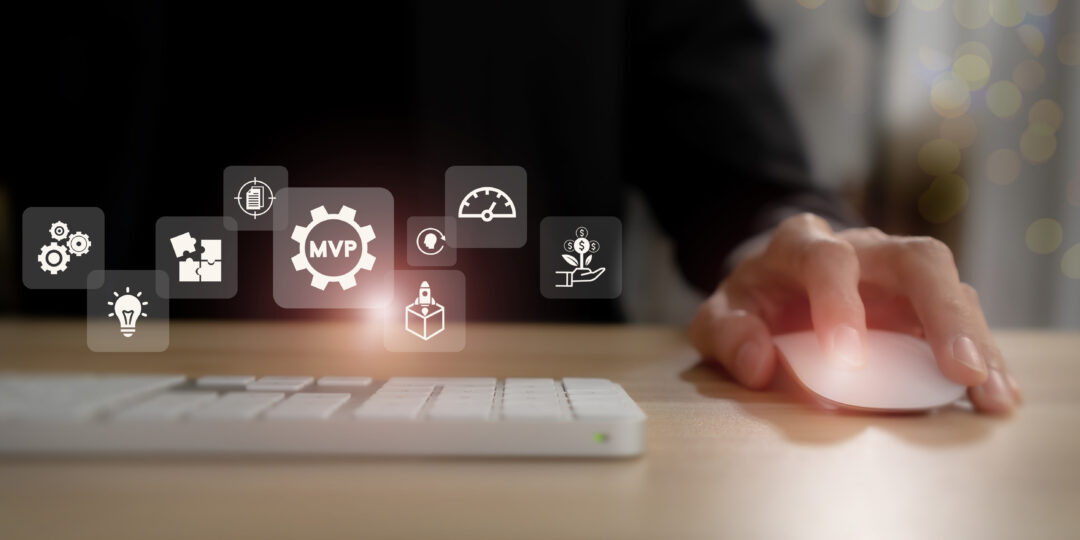A prototype and a Minimum Viable Product (MVP) are both tools used in the development of a product, but they have different purposes and characteristics.
A prototype is focused on testing and validating product ideas, concepts, and designs, while an MVP is focused on testing and validating the market fit of a product idea.
A prototype is the best practice in software development to help define and validate the features of the software product. It’s used to help estimate the cost of developing an MVP product.
Creating a prototype prior to developing an MVP can save hundreds of thousands of dollars of rework and redesign.
What is a Prototype?
A prototype is an early version of a product that is used to test and validate ideas, concepts, and designs. The goal of the prototype is to determine what the software product should do prior to starting development. Creating a prototype prior to developing an MVP can save hundreds of thousands of dollars of rework and redesign.
A prototype can be as simple as a sketch or a wireframe, or as complex as a functioning model of the final product. The main goal of a prototype is to test and validate the product idea, identify any potential issues, and provide a visual representation of the final product.
What is an MVP?
A Minimum Viable Product (MVP) is a minimum and functional version of a product that is developed with the goal of testing and validating the market fit of a product idea.
An MVP is a working version of a product that has just enough features to satisfy early adopters and to validate the product’s value proposition.
The main goal of an MVP is to validate the market fit of a product idea, collect feedback from customers, and determine if it is worth investing further in the development of the product.
Key Differences between Prototype and MVP
1. Goal
Prototype
The goal of a prototype is to figure out WHAT the software should do before building it. Prototype UX designs are reviewed with potential users and helps visualize the software in a way that documentation cannot convey. Roughly 75% of a software’s requirements can be determined based on the user experience and screen design.
MVP
The goal of the MVP is to go to market with an initial beta version of the software. The MVP is used to collect feedback from a broader user base and gather any feedback for features that should be added to the platform.
The MVP is the foundation for new versions of the platform as it’s enhanced over time.
2. Features
Prototype
The features of a prototype will vary based on the complexity of the product that will be delivered, but can generally consist of the following:
- Clickable Prototype
- High-level Requirements Documentation
- Initial Estimates
- Proof of Concept Code for AI capabilities
MVP
An MVP should contain all features that would attract an early adopter to use the software platform.
The MVP deliverables consist of:
- FinalizedRequirements Documentation
- Architecture Diagram
- Database Schema Design
- API Documentation like Swagger or Postman
- API and Server Keys
- Source Code
- Server Setup
3. Capabilities
Prototype
During the prototyping phase, very little if any code is delivered. Since the goal is to figure out WHAT the software should do and test proof of concept code to determine if there are any complexities that can cause problems with the budget.
The capabilities of the prototype are limited to a clickable design which is used to demo the capabilities with potential users and customers.
MVP
An MVP IS the software product and has the capabilities that were defined within the scope of the project..
The capabilities should be determined and finalized prior to kicking off the development project and the end result should be working software.
4. Requirements
Prototype
A prototype can help determine the final requirements of the project.
Normally high-level requirements are created during this time, then finalized during the MVP phase of the project.
The goal is to create requirements that can be used to develop full-featured user stories
MVP
An MVP IS the software product and has the capabilities that were defined within the scope of the project..
The capabilities should be determined and finalized prior to kicking off the development project and the end result should be working software.
5. Cost
Prototype
A prototype focuses on the UX (User Experience) and this part of a software project usually requires a Product Manager and a UX Designer.
This process can take 4-8 weeks and the deliverable is usually a clickable prototype designed in a software platform like Figma and initial requirements documentation that will help to determine architecture and solution design for the final product.
The cost of a prototype can vary from $5k-25k depending on the features and research required to complete the prototype deliverables.
MVP
The MVP on a project generally requires a CTO to help lead technical design and architecture. A team of 2-3 developers will complete the coding, and a QA Analyst verifies that the software meets the requirements.
This process can take 8-16 weeks and the deliverable is a working software product launched on a website, in the app store, or both.
The cost of an MVP can range from $20-250k depending on the development architecture used (no code, low code, hybrid native, or native) and the complexity of the product.
TLDR
When launching a software product, creating a prototype before creating an MVP is the fastest and most reliable way to control costs on your software project, finalize the requirements on the project, and minimize development rework.



